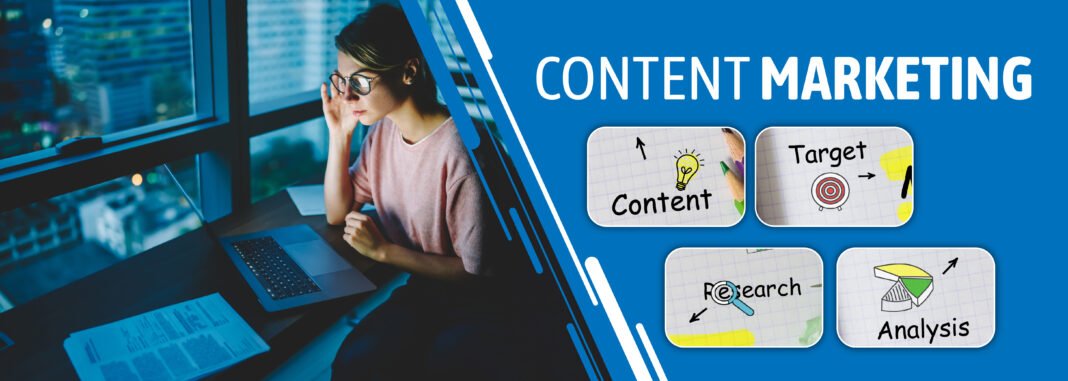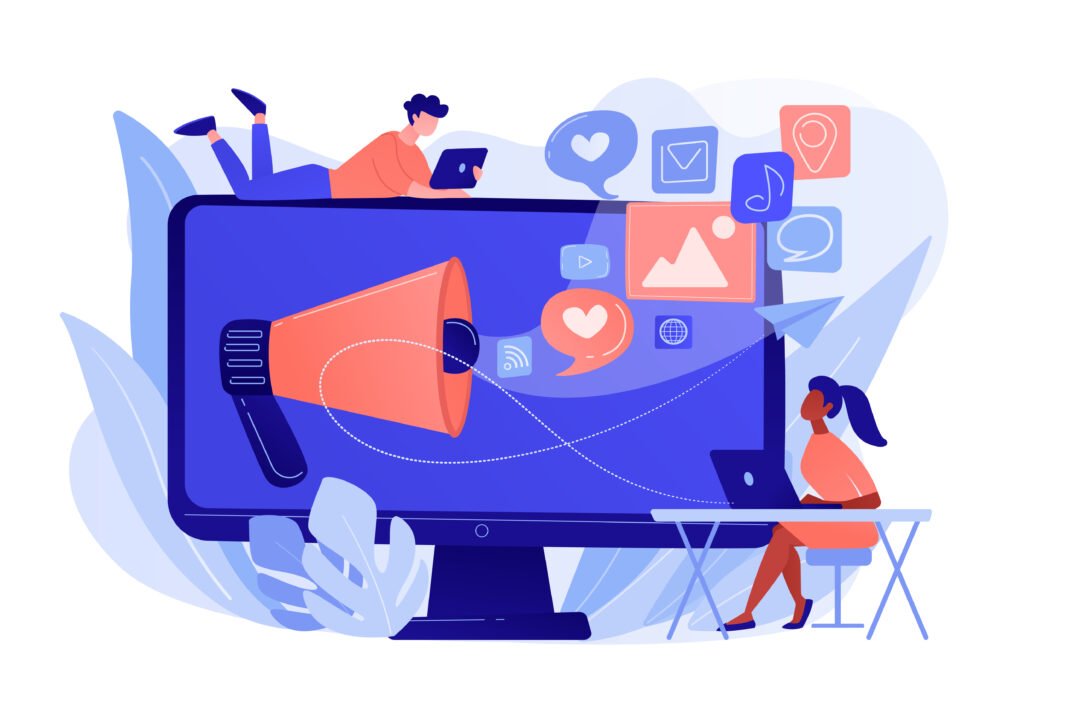Do you know who your target audience or buyer personas are? Identifying and understanding your customers’ behavior is crucial to developing effective marketing strategies. Two common approaches to understanding customers are buyer personas and target audience analysis. According to HubSpot, 44% of marketers’ biggest challenge is understanding their target audience.
In this article, we will explore the differences between buyer personas and target audiences, their benefits, and how to create them.
Table of Contents
- 1 What Are Buyer Personas?
- 2 Benefits of Buyer Personas
- 3 What Is Target Audience?
- 4 Benefits of Target Audience
- 5 Differences between Buyer Personas and Target Audience
- 6 How to Create Buyer Personas
- 7 How to Identify a Target Audience
- 8 With the Best Digital Marketing Agency, You Can Accelerate Business Growth
- 9 Conclusion
What Are Buyer Personas?
Buyer personas create a detailed profile of an individual buyer with their aims, goals, challenges, and preferences. They are based on data and insights gathered from research and analysis. A buyer persona provides a typical customer profile that includes behaviors, preferences, motivations, and challenges. By developing buyer personas, you can better understand your customer’s needs and motivations, creating more personalized and effective marketing strategies.
Benefits of Buyer Personas
Improved Marketing Strategies:
Buyer personas help businesses better understand their customers and create more targeted and effective marketing strategies. Identifying a target market and customizing your products or services to meet their needs and preferences is essential for business success.
Better Customer Experience:
Creating personalized content and messaging that addresses the buyer persona’s needs and interests improves customer experience and builds stronger relationships with buyers.
Enhanced Sales Performance:
By approaching each customer using buyer personas, businesses can improve their ability to engage and convert customers.
What Is Target Audience?
A target audience is a demographic that a company hopes to attract with its goods or services. They can be identified based on various factors such as age, gender, location, income level, interests, and other psychographic characteristics. Identifying a target audience is crucial for creating more focused and impactful marketing campaigns, and according to another HubSpot report, 70% of businesses identifying the right target audience improved their overall marketing effectiveness.
Benefits of Target Audience
More Effective Marketing:
Understanding your customers allows businesses to create better marketing strategies that are more focused and impactful, customized to their needs and interests.
Higher Conversion Rates:
Customizing messaging and marketing strategies to the target audience can boost the chances of converting leads into customers.
Cost Savings:
Targeting a specific audience helps businesses target their marketing resources and budget to the most profitable segments, reducing wasted efforts and costs.
Differences between Buyer Personas and Target Audience
Scope:
A target audience is a group of organizations and people a business wants to reach with its products or services, while a buyer persona is a detailed representation of an ideal customer within that target audience.
Level of Detail:
Buyer personas are more detailed than general target audiences. They fully understand an ideal customer’s preferences, behaviors, and motivations.
Application:
Buyer personas are often used for content creation, messaging development, and sales prospecting, while target audiences are more commonly used for broader marketing strategy and targeting.
How to Create Buyer Personas
Creating buyer personas involves the following steps:
Conduct Market Research:
Collect customer data through interviews, surveys, and social media analytics. Look for trends in your audience’s psychographic and demographic data, purchasing patterns, and motivations.
Identify Common Characteristics:
Search for demographic patterns like gender, age, location, education, and income. Additionally, keep an eye out for psychographic indicators like lifestyle, values, and interests.
Create Personas:
Include their name, age, location, job title, hobbies, interests, values, goals, and information about their buying behavior and preferences.
Refine and Test:
Refine your personas based on feedback from your customer and team. Test your personas by creating content and messaging that speaks to each persona and track the results.
How to Identify a Target Audience
To identify a target audience, businesses can follow these steps:
Clearly Define Your Product or Service and Identify its Unique Selling Proposition:
Start by clearly defining what your product or service offers and what sets it apart from competitors. Determine the unique selling proposition (USP) that makes your offering valuable to potential customers.
Identify the Needs that Your Product or Service Meets and the Problems it Solves:
Understand the specific needs and pain points your product or service addresses. This will help you identify the groups of people who are most likely to benefit from what you offer.
Research to Identify Groups of People Who Have Those Needs and Problems:
Conduct market research to identify groups of people who align with the needs and problems your product or service solves. Look for demographic data, such as age, gender, location, and income, as well as psychographic information like interests, attitudes, and preferences.
Analyze the Data Collected to Identify Segments and Patterns:
Analyze the data you’ve gathered to identify segments or groups within your target audience that share common characteristics or behaviors. Look for patterns that can help you refine your targeting and marketing strategies.
Use the Collected Data to Develop Detailed Buyer Personas Representing Your Target Audience:
Based on the insights gained from your research and analysis, create detailed buyer personas that represent different segments of your target audience. These personas should include information about their demographics, psychographics, motivations, and buying behavior.
Refine Your Target Audience Based on Feedback from Your Team and Customers:
Share your target audience profiles with your team and gather their feedback. Also, seek feedback from your existing customers to ensure your target audience aligns with the actual people who are interested in your product or service.
Test Your Targeting by Creating Campaigns that Speak to Your Target Audience and Track the Results:
Develop marketing campaigns tailored to specific segments of your target audience. Monitor and analyze the results to assess the effectiveness of your targeting and make adjustments as needed.
By following these steps, businesses can identify their target audience with precision and create marketing strategies that effectively reach and engage the right people.
Remember to continuously refine and update your target audience profiles based on new data and insights to stay relevant in a dynamic market.
With the Best Digital Marketing Agency, You Can Accelerate Business Growth
Businesses need a strong online presence to succeed in the modern digital era. Digital marketing is useful in this situation. By partnering with the best digital marketing agency, businesses can boost their growth and achieve their goals faster.
A good digital marketing agency will have a team of experts who are knowledgeable in various digital marketing strategies, such as SEO services, social media marketing, email marketing, and more. They will work closely with businesses to create a tailored plan that fits their unique needs and budget. With the right agency, businesses can reach their target audience effectively, build brand awareness, and ultimately drive sales.
Conclusion
Both buyer personas and target audiences are important for businesses to better understand and reach their customers. By developing buyer personas, businesses can create more personalized and effective marketing strategies, improve customer experience, and enhance sales performance. Meanwhile, identifying a target audience helps businesses create more focused and impactful marketing campaigns, increase conversion rates, and reduce costs.
By combining both approaches, businesses can gain a comprehensive understanding of their customers and develop marketing strategies that truly resonate with them.






